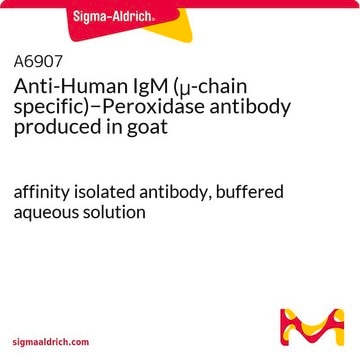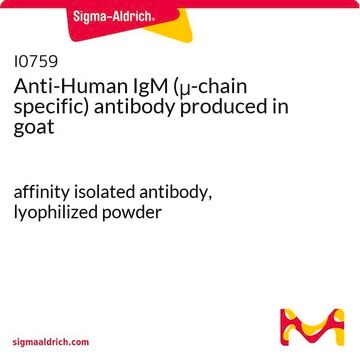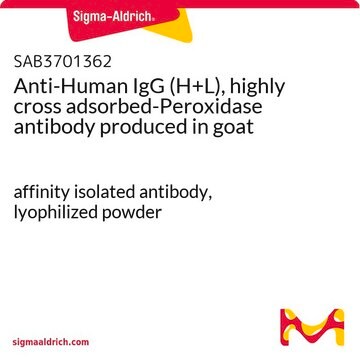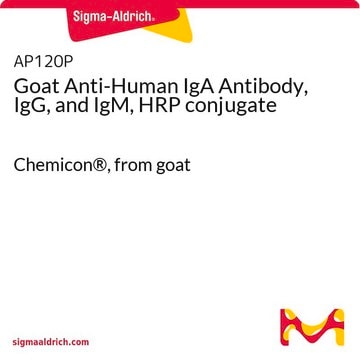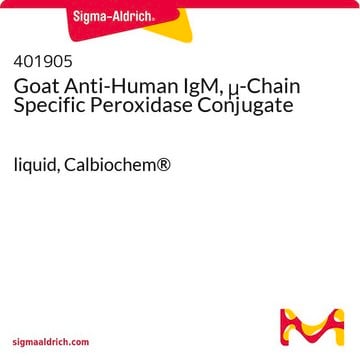A0420
Anti-Human IgM (μ-chain specific)−Peroxidase antibody produced in goat
affinity isolated antibody
Synonym(s):
Goat Anti-Human IgM (μ-chain specific)−HRP
About This Item
Recommended Products
biological source
goat
conjugate
peroxidase conjugate
antibody form
affinity isolated antibody
antibody product type
secondary antibodies
clone
polyclonal
species reactivity
human
technique(s)
direct ELISA: 1:50,000
dot blot: 1:100,000 (chemiluminescent)
immunohistochemistry (formalin-fixed, paraffin-embedded sections): 1:200
shipped in
dry ice
storage temp.
−20°C
target post-translational modification
unmodified
Looking for similar products? Visit Product Comparison Guide
Related Categories
General description
Goat anti-human IgM (mu-chain specific)-peroxidase antibody is specific for human IgM and does not bind to other human Igs. Furthermore, the antibody does not react with mouse and rat IgG. Hence, the antibody conjugate yields reduced background with mouse or rat samples.
Immunogen
Application
- for dot blot (1:100,000) and immunohistochemistry (1:200 using formalin-fixed, paraffin-embedded sections) applications.
- in immunoblotting
- sandwich immunoassay
Biochem/physiol Actions
Physical form
Preparation Note
Disclaimer
Not finding the right product?
Try our Product Selector Tool.
Signal Word
Warning
Hazard Statements
Precautionary Statements
Hazard Classifications
Skin Sens. 1
Storage Class Code
12 - Non Combustible Liquids
WGK
WGK 2
Flash Point(F)
Not applicable
Flash Point(C)
Not applicable
Personal Protective Equipment
Certificates of Analysis (COA)
Search for Certificates of Analysis (COA) by entering the products Lot/Batch Number. Lot and Batch Numbers can be found on a product’s label following the words ‘Lot’ or ‘Batch’.
Already Own This Product?
Find documentation for the products that you have recently purchased in the Document Library.
Customers Also Viewed
Our team of scientists has experience in all areas of research including Life Science, Material Science, Chemical Synthesis, Chromatography, Analytical and many others.
Contact Technical Service